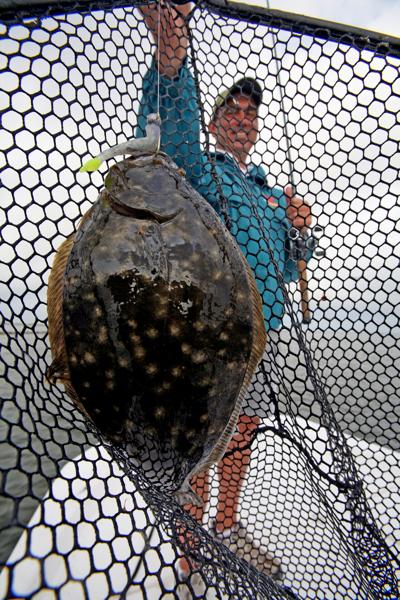When LSU researchers recently set out to gather data on southern flounder, they ran into a problem: they could hardly find any in Louisiana.
It has been well-documented that their population has dropped steeply in recent years, but they were first to report the problem extended beyond the state's waters. A study they published this month reported that the declines in the flat, football-shaped fish’s population were happening throughout their range, which spans from the Carolina to Texas.
“To see similar declines happening throughout their range was surprising and a concerning aspect,” said Kenneth Erickson, the first author on the LSU-led study. He added that it could be a potential warning sign for other aquatic life similar to southern flounder.
In recent years, the Louisiana Department of Wildlife and Fisheries has logged some of the lowest numbers of adult female flounder in the past four decades.
While the decline has been worrisome, the cause is still unclear.
“Anytime a fishery collapses, it could be many different things,” Erickson said. “We probably think it’s the fishing pressure combined with some environmental change that is increasing the stress on these species.”
State wildlife officials and researchers suspect the declines have more to do with the population becoming increasingly more masculine. It could be related to environmental changes, especially warmer water temperatures in the marshy estuaries where they give birth and grow before swimming into the ocean.
Flounder sexually determine into males or females after they’re born and water temperatures play an influence in determining their sex. Warmer water, for instance, tends to see more flounder develop into males. If that happens often enough, it could create a bottleneck in their ability to repopulate.
Males also grow slower than females and generally don't live as long. They typically grow over 14 inches long, while females can grow to about twice the size.
Though not a top-level predator in the water, the southern flounder’s ability to camouflage and its ability to avoid being spotted because of their flat bodies allow them to ambush quick-moving shrimp or smaller fish.
The number of southern flounder caught by commercial fishermen in Louisiana has also dropped off considerably in recent decades. In 2017, the state’s recreational southern flounder harvest dwindled to 124,000 pounds, down from a high of 624,000 pounds in 2013.
Stephen Midway, an LSU professor in the Department of Oceanography and Coastal Sciences, said states like North Carolina have a much larger industry focused on flounder compared to Louisiana.
“In Louisiana, we don’t have much flounder to lose as other states, so it makes it more concerning, but we don’t have the economic effect on livelihoods that could potentially disappear,” he said.
Commercial fishermen here sometimes catch them in their nets and make a few dollars from them, and recreational anglers who go after them likely will put on a different lure and try for something else if they’re having no luck with flounder.
Current regulations allow for recreational fishermen in Louisiana, in most cases, to take up to 10 flounder per day. But the state Department of Wildlife and Fisheries has been considering reducing that number by half.
Florida recently made a similar rule by setting limits on the size of fish recreational anglers could take. Commercial fishermen are also not allowed to take fish under a certain length. Other states are considering similar limits, including Louisiana.
Wildlife and Fisheries biologist Jason Adriance said the agency will likely conduct a study to present to the commission soon.
Midway said researchers’ next step is to get regional collaboration to consider southern flounder broadly throughout their habitats. Since they move offshore, a regional effort may be more effective in managing them rather than individual states.
"If you have an iconic and once-abundant coastal fish and it's disappearing, it's certainly worth our attention," Midway said. "Maybe it is a one-off or a unique species that's in the wrong place at the wrong time, but I wouldn't want to assume that."



